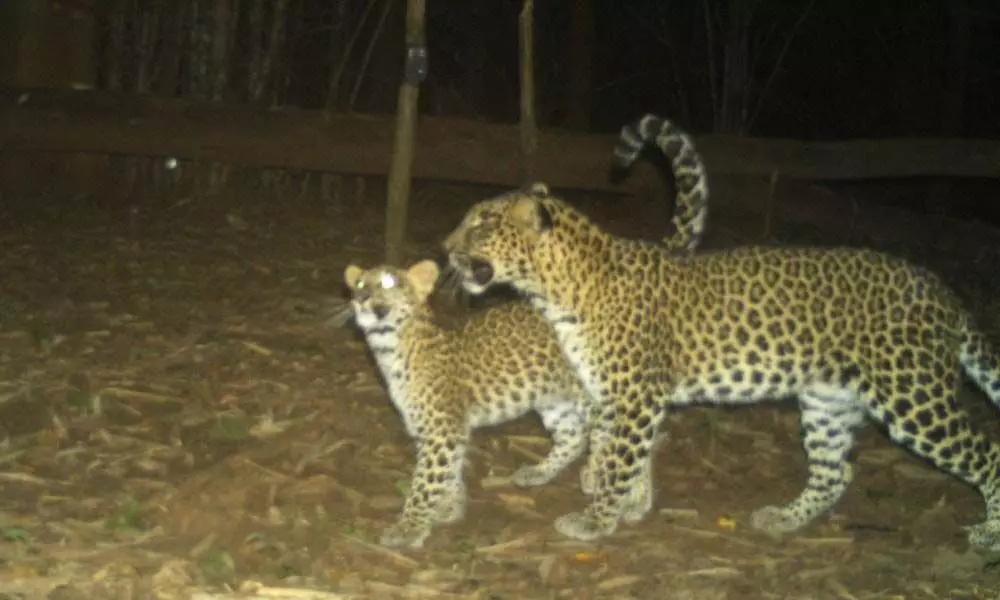Tiger survey in Godavari districts concludes

Tigers in Papikonda Natinal Park
- Officials have identified 230 species of birds and 14 species of amphibians using modern camera traps
- Divisional Forest Officer, Wildlife C Selvam says first phase of tiger survey is taken up in East Godavari district using 142 modern trap cameras in 71 locations and completed in 45 days
- NTCA will release the final census report on World Tiger Day, July 29
Rajamahendravaram: The forest department officials have completed survey of tiger population in Papikonda National Park forest area of the twin districts of Godavari. The officials have identified 230 species of birds and 14 species of amphibians using modern camera traps.
All India Tiger Estimation (AITE) was conducted by the National Tiger Conservation Authority (NTCA) and Wildlife Institute of India (WII) in collaboration with State Forest Department.
Rajamahendravaram Forest department officials observed pug marks at water holes and other areas in the forest area in the National Park. According to them, National Parks covers 10012.858 sq km in East and West Godavari districts along the banks of Godavari. National Park area harbours rich faunal diversity and supports Tiger, Panther, Wild dog, Sloth Bear, Indian Gaur, Sambar and Barking Deer.
The officials said that the census for carnivore and herbivore sign survey was completed in November 2021 in twin districts of Godavari in the first phase.
Speaking with The Hans India, Divisional Forest Officer (DF) Wildlife C Selvam said the first phase of tiger survey has been taken up in East Godavari district using 142 modern trap cameras in 71 locations and completed in 45 days. In the second phase (Block- 2), 90 cameras were installed at 45 locations in West Godavari district.
Selvam said that they will conduct tiger population survey every four years in National Park in twin districts of Godavari. He said that they have identified wild animals in forests with the help of an ecological mobile application (Digital App). 'Camera traps images would help in identifying individual big cats through their stripe patterns and other unique physical features. Tigers, leopards, Indian gaur, Sloth bear, spotted deer, mouse deer, porcupine, leopard cat, common palm civet, small Indian civet, rusty spotted cat are caught in camera traps.' He said enumeration report has been sent to the National Tiger Census Authority (NTCA) and after going through it, the NTCA will release the final census report on World Tiger Day, July 29.
Wildlife Forest Ranger SSR Vara Prasad told 'The Hans India' that more than 250 modern cameras were used to photograph tiger pugmarks, which would be analysed using computers to identify various parameters of tigers.
He said during 2014-15, they have identified tigers and panthers in National Park. Census programme was carried out from October 25 and completed towards the end of March 2022.
He informed that surveys are being conducted every year in National Park and census was conducted in Chinturu and VR Puram mandal in Chinturu division of East Godavari district. He said even though there is difference between the pugmarks of tiger and panther, it is difficult to identify and enumerate their population category wise. However, owing to expertise and experience they are able to enumerate both categories and prepared the population of two big cats easily.
He said that they identified the tigers in the National Park at four places with the help of cameras. Stating that they observed tiger and panther movements in great numbers in Chinturu agency area, he said recently they have identified tiger pug marks in Chintruru agency. He said that the camera trap images help in identifying the individual tigers through stripe patterns and other physical features.















